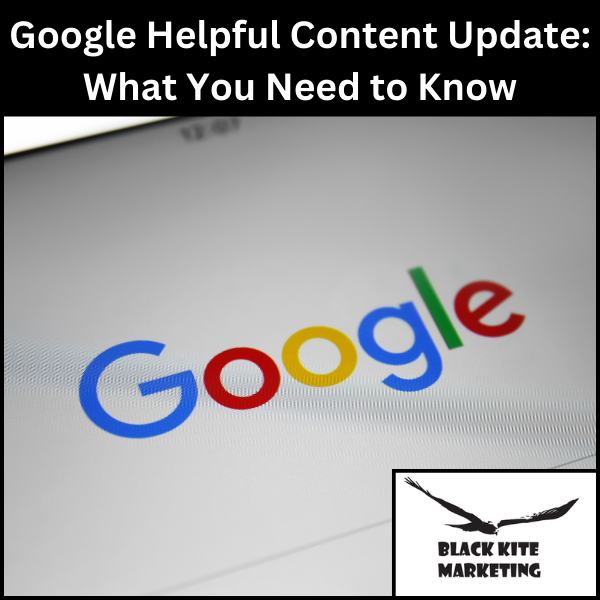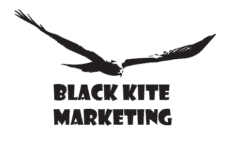
Google Helpful Content Update: What You Need to Know
The Google Helpful Content Update represents a significant algorithmic shift by the search engine giant towards prioritizing user-focused content that directly addresses user intent. This update emphasizes the importance of providing helpful and relevant information to users, aligning closely with their search queries and needs. Unlike previous updates which mainly focused on technical aspects of SEO like keywords and backlinks, this update emphasizes the quality and usefulness of content.
Websites that prioritize user intent optimization by delivering comprehensive and insightful content are likely to see improved visibility and rankings on Google’s search results pages. In essence, the Google Helpful Content Update reinforces the importance of creating valuable content that genuinely addresses users’ queries and concerns, thereby enhancing the overall search experience.
Why is the Google Helpful Content Update Important for SEO?
The Google Helpful Content Update holds immense significance for SEO practitioners and website owners alike due to its profound impact on search engine optimization strategies. With this update, Google underscores the importance of prioritizing user-centered ranking factors, emphasizing the creation of valuable content that directly addresses user queries and needs. This shift necessitates a recalibration of SEO strategies towards crafting comprehensive, insightful, and user-focused content.
Websites that prioritize valuable content creation, catering to user intent and providing genuine solutions, are poised to benefit significantly from improved visibility and rankings on search engine results pages. By aligning with the principles of the Google Helpful Content Update, SEO professionals can enhance their website’s performance and better meet the evolving demands of users in the digital landscape.
Creating Helpful Content That Meets Google’s Standards
Creating helpful content that meets Google’s standards requires a holistic approach that incorporates
- User Intent Research
- Keyword Analysis
- An Informative & Engaging Writing Style
- Structured Data Markup
User Intent Research
Understanding the intent behind users’ search queries is crucial for tailoring content to their needs. By conducting thorough user intent research, which may involve analyzing search trends, user behavior data, and feedback, content creators can gain insights into the specific questions, problems, or interests of their target audience.
Keyword Analysis
By identifying relevant keywords and phrases that align with user intent, content creators can optimize their content for search engines while ensuring it remains valuable and informative. However, it’s important to strike a balance between incorporating keywords naturally and maintaining readability and coherence.
An Informative & Engaging Writing Style
An informative and engaging writing style is paramount for creating content that resonates with users and meets Google’s standards. Content should be well-researched, providing accurate information and valuable insights to users. Additionally, adopting an engaging writing style that captivates the audience’s attention can enhance the overall user experience and encourage longer engagement with the content.
Structured Data Markup
Structured data markup is a powerful tool for enhancing the visibility and relevance of content in search engine results. By implementing structured data markup, content creators can provide additional context and metadata to search engines, helping them better understand the content’s relevance to users’ queries. This can result in rich snippets, featured snippets, and other enhanced search results features, which can significantly improve the visibility and click-through rates of the content.
Optimizing Your Website’s Current Content
Optimizing your website’s content to align with the Google Helpful Content Update involves enhancing user experience and providing valuable information to visitors. Here are a few steps you will want to take:

Content Audit
Conducting a comprehensive content audit is a crucial first step in this process. By evaluating existing content for relevance, accuracy, and usefulness, you can identify areas for improvement and prioritize updates or revisions to better align with user intent.
Improve Page Load Speed
Improving page load speed is another essential aspect of optimizing your website’s content. In today’s fast-paced digital landscape, users expect websites to load quickly and seamlessly across all devices. Slow-loading pages can lead to higher bounce rates and decreased user satisfaction, ultimately impacting your site’s performance in search engine rankings. By optimizing images, minimizing unnecessary scripts, and leveraging caching techniques, you can significantly improve page load speed and provide a smoother browsing experience for your visitors.
Mobile-Friendly And Responsive
With an increasing number of users accessing the web via mobile devices, having a responsive design that adapts to different screen sizes and resolutions is essential. Mobile-friendly websites not only cater to the needs of mobile users but also signal to search engines that your site is optimized for modern browsing experiences. By adopting a mobile-first approach to web design and testing your site across various devices, you can ensure that all visitors, regardless of their device, have access to your content in a user-friendly format.
Other Aspects of User Experience (UX)
As mentioned earlier user experience is an important factor for this new update, here are some other ways you can improve the UX on your website:
Website Navigation And Architecture
A well-structured website with intuitive navigation enables visitors to easily find the information they’re seeking, leading to longer engagement and reduced bounce rates. By organizing content logically and providing clear pathways to relevant pages, you can enhance the overall user experience and improve your site’s performance in search results.
Clear Call-To-Actions (CTAs)
Effective CTAs prompt users to take specific actions, such as signing up for a newsletter, making a purchase, or contacting a business. By using clear, compelling language and strategically placing CTAs throughout your website, you can guide visitors towards desired outcomes and enhance user engagement. This not only improves the overall user experience but also signals to search engines that your website is valuable and relevant to users’ needs.
Accessible Design Elements
Accessible design ensures that all users, including those with disabilities or impairments, can easily navigate and interact with your website. This involves implementing features such as alternative text for images, keyboard navigation options, and color contrast considerations. By prioritizing accessibility in your website design, you can create a more inclusive experience for all users and improve your site’s usability and search engine visibility.
By prioritizing user-friendly website navigation and architecture, clear call-to-actions, and accessible design elements, you can enhance the overall user experience and improve your site’s visibility and rankings in search engine results.
Analyzing Your Website’s Performance: Key Metrics

Analyzing website performance after the Google Helpful Content Update involves monitoring a few key metrics. These metrics will gauge the impact of the algorithmic changes on your site’s visibility, user engagement, and conversion rates.
Organic Traffic
Organic traffic changes provide valuable insights into how your website is performing in search engine results pages (SERPs) following the update. Significant fluctuations in organic traffic may indicate shifts in search visibility and user behavior, warranting further investigation into content relevance and optimization strategies.
Bounce Rates
Bounce rate fluctuations offer insights into the effectiveness of your website in retaining visitors and providing relevant content. A decrease in bounce rate suggests that visitors are finding value in your content and exploring multiple pages, while an increase may signal mismatches between user intent and content delivery.
Time On Page
Time-on-page metrics provide context on user engagement and content consumption patterns, with longer durations typically indicating higher levels of interest and engagement.
Conversion Rates
Finally, monitoring conversion rates allows you to assess the effectiveness of your website in achieving desired outcomes, such as purchases, sign-ups, or inquiries, following the update.
By tracking these key metrics, you can gain valuable insights into the performance of your website post-update and make informed decisions to optimize content and user experience accordingly.
Conclusion
The Google Helpful Content Update emphasizes the importance of creating user-focused content that provides value. By aligning your website’s content with this update and considering user intent in your SEO strategy, copywriters can optimize their writing to better cater to users’ needs and preferences, ultimately improving their website’s visibility and user experience.
If you would like to learn more about this update and what changes you need to make in your SEO strategy call Black Kite Marketing at (516) 259-1813.

